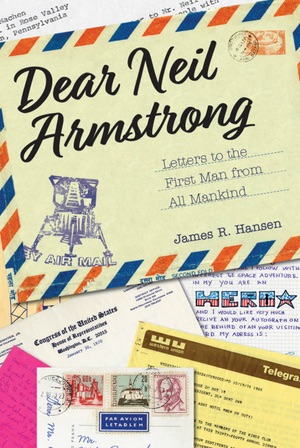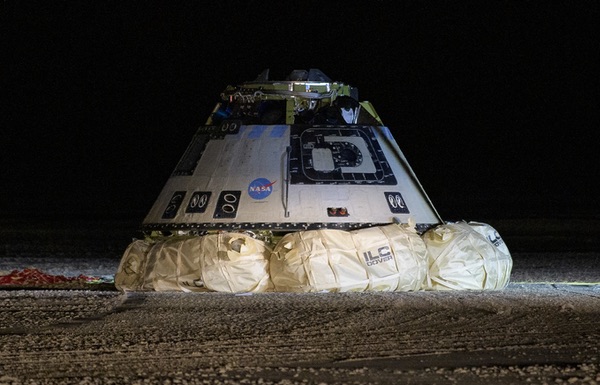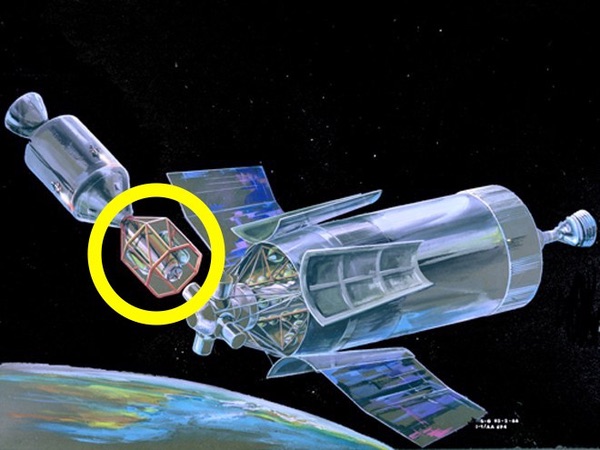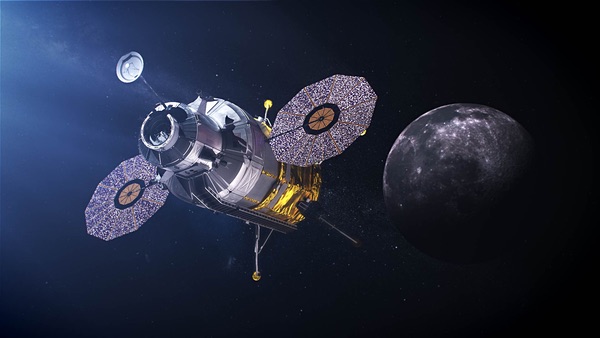1/I 2003 [1-5]1)
Review: Dear Neil Armstrongby Jeff Foust Monday, January 6, 2020

Dear Neil Armstrong: Letters to the First Man from All Mankind
by James R. Hansen
Purdue Univ. Press, 2019
hardcover, 400 pp., illus.
ISBN 978-1-55753-874-1
US$34.99
https://www.amazon.com/exec/obidos/ASIN/1557538743/spaceviewsNeil Armstrong gained a reputation in his post-Apollo career of being a recluse. This was not accurate—he was quite active from the end of his time at NASA until his death in 2012—but he was a private person, carefully choosing what he did. Of course, that didn’t stop Armstrong from being flooded with letters over the years, from wellwishers seeking nothing more than an autograph to those offering business and political opportunities.
https://www.thespacereview.com/article/3857/12)
Chicken or the egg: space launch and state spaceportsby Roger Handberg Monday, January 6, 2020
 Spaceport America is just one of many spaceport projects, of varying stages of development, seeking to get into the launch market in the United States. (credit: J. Foust)
Spaceport America is just one of many spaceport projects, of varying stages of development, seeking to get into the launch market in the United States. (credit: J. Foust)A recent article in The Space Review presents a nice summary of where US state spaceports stand at this point in history (see “How many spaceports are too many?”, The Space Review, December 9, 2019). The concern is that there are too many, meaning that many proposed and actual state spaceports may fail, remaining as white elephants symbolizing the cyclical nature of the space marketplace. The Space Foundation also reported that “around the world, there are 40 active spaceports, 10 in development and at least 13 proposed. The U.S. has five times as many spaceports active, in development, or proposed compared to its nearest competitor, Russia, which currently has five active spaceports and no new known ones in development. China is third with four active spaceports.”
https://www.thespacereview.com/article/3858/13)
It’s all a matter of timingby Wayne Eleazer Monday, January 6, 2020
 The Boeing CST-100 Starliner after landing in New Mexico, its test flight cut short by a timer problem. (credit: NASA/Bill Ingalls)
The Boeing CST-100 Starliner after landing in New Mexico, its test flight cut short by a timer problem. (credit: NASA/Bill Ingalls)The timing problem that caused the partial failure of the Boeing Starliner’s first mission represents yet another space launch when bad timing—or at least bad synchronization of timing—occurred.
On the first SM-75 Thor IRBM to be launched operationally at Vandenberg Air Force Base, someone forgot to cut the wire that secured the 35mm tape that served to provide electromechanical timing for the flight. As far as the booster was concerned, the plus count never got past T-0. The booster never entered its pitch and roll programs and climbed straight up until the Range Safety Officer at Vandenberg decided he’d better send the destruct signal.
https://www.thespacereview.com/article/3859/14)
Strange bedfellowsby Dwayne A. Day Monday, January 6, 2020
 The Mapping and Survey System being attached to an Apollo Applications Program “wet workshop” in Earth orbit. This NASA artist illustration from early 1967 demonstrates that MSS was depicted in NASA artwork at the time. Yet reporters never asked many questions about what MSS really was or where it came from. (credit: courtesy David Portree)
The Mapping and Survey System being attached to an Apollo Applications Program “wet workshop” in Earth orbit. This NASA artist illustration from early 1967 demonstrates that MSS was depicted in NASA artwork at the time. Yet reporters never asked many questions about what MSS really was or where it came from. (credit: courtesy David Portree)In the 1960s, NASA was a big, well-funded government agency with a high profile. In contrast, the National Reconnaissance Office (NRO) was significantly smaller and it did not officially exist. It was a covert agency, hiding in the shadows, not publicly acknowledged until 1992. Despite this, the two organizations cooperated on several projects throughout the decade. The most important was undoubtedly the UPWARD program.
https://www.thespacereview.com/article/3860/15)
The challenges facing Artemis in 2020by Jeff Foust Monday, January 6, 2020
 One near-term challenge for NASA is how to handle development of human-rated lunar landers given the shortfall in funding for the program in 2020. (credit: NASA)
One near-term challenge for NASA is how to handle development of human-rated lunar landers given the shortfall in funding for the program in 2020. (credit: NASA)When 2019 started, NASA was going back to the Moon, gradually. The agency had set an internal goal of getting astronauts back onto the surface of the Moon by 2028, after developing the lunar Gateway in orbit around the Moon that would serve as a base camp for such missions, and for other purposes. That all changed in March, though, when Vice President Mike Pence directed NASA to get back to the Moon in the next five years, a timeline later interpreted to be the end of 2024 (see “Lunar whiplash”, The Space Review, April 1, 2019).
https://www.thespacereview.com/article/3861/1